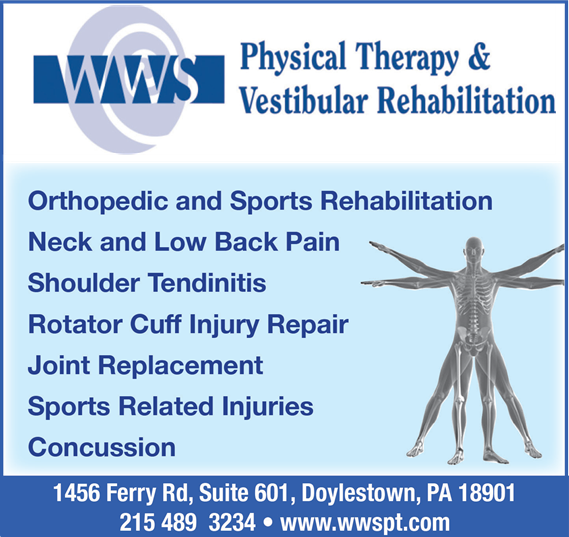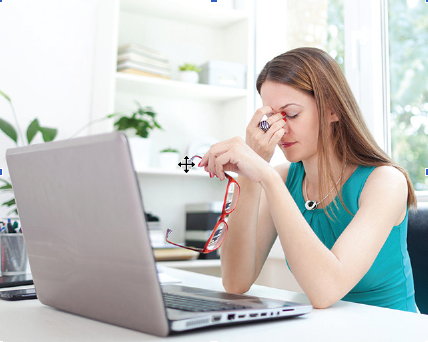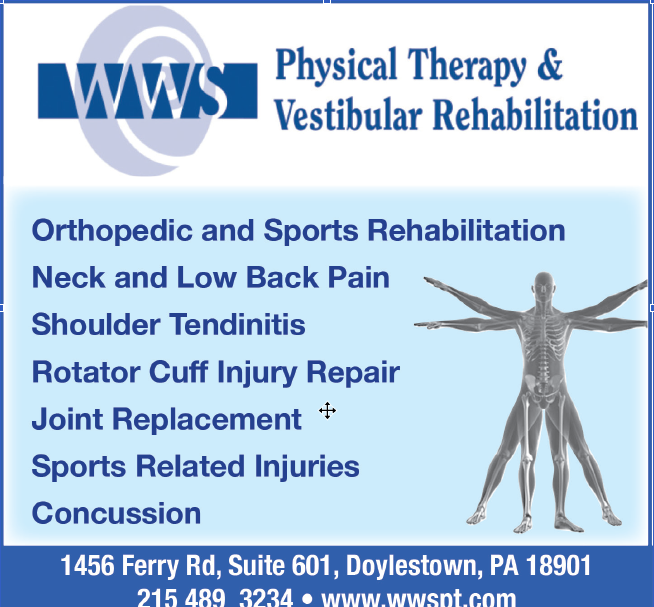

Healing, Function, Recovery, Health


Parkinson’s disease (PD) is a progressive neurologic condition with no cure. Half a million Americans are currently diagnosed with PD, and due to misdiagnosis/late diagnosis, experts estimate that the number of people living with PD is closer to 1 million.
Finding a cure for PD has proved challenging due to the variability of the diagnosis. There are four main motor symptoms associated with PD: bradykinesia (slow movement), tremor (more commonly at rest), rigidity (an increased tone that makes muscles feel “tight”), and postural instability (balance issues). An affected individual can have these symptoms in any combination. The loss of neurons in the brain that produce the neurotransmitter (signaling molecule) dopamine is responsible for these motor symptoms.
Some of the earliest signs of PD include resting tremor (worse in times of physical or emotional stress), small handwriting, difficulty initiating movement, or getting “stuck” in the middle of the action (often in narrow spaces such as doorways), a change in your voice (softer, raspier), masked facial expressions, forward flexed posture, and lightheadedness when getting up from sitting or lying down.
Several non-motor symptoms have been identified, including depression/ anxiety, cognitive changes, constipation and nausea, fatigue, breathing problems, poor sense of smell, disrupted REM sleep, and hyperhidrosis (excessive sweating). Recent research suggests that additional damage to brain areas responsible for regulating pathways using norepinephrine, serotonin, and acetylcholine may explain the non-motor symptoms.
The cause of PD needs to be better understood. While there appears to be a family history in 15 to 25% of the cases, only about 30% of those with a family history have an identifiable genetic mutation. The origin of most issues is likely a result of a combination of genetic and environmental factors. “Early-onset” PD (diagnosis before age 50) is more likely to have a genetic component than onset later in life.
Current estimates are that diagnosis of PD occurs 5 to 10 years from the onset of symptoms. Most people have lost 60 to 80% of the dopamine-producing neurons at the time of diagnosis. This prevents early treatment and may miss a therapeutic window that could reverse or significantly slow the progression of the disease. In addition, exercise and lifestyle changes become more challenging as the disease progresses.
Because some non-motor symptoms (particularly olfactory dysfunction, sleep disruption, and fatigue) occur before identifiable motor changes, there is potential for earlier detection via non-motor signs. However, these symptoms are vague, familiar, and not specific to PD. Furthermore, there is no definitive test for PD, and medical professionals typically use a combination of symptoms, neurological examination, and brain scan tests such as DAT and SPECT to confirm the suspicion.
In September 2022, a group of researchers from The UK published a study that suggests that a 3-minute skin swab test for sebum (the body’s oily secretions) is sensitive enough to detect differences in people with PD versus controls. Although further research is needed to determine the implementation of this test in a clinical setting, this has the potential to improve early dramatically and definitive diagnosis of PD, thereby promoting early intervention and improved management of the disease.
Research to determine better treatment options for PD is ongoing. In August 2022, a study was published demonstrating that irisin (a hormone produced during exercise) was shown to prevent the misfolding of a protein responsible for causing cell death in the substantia nigra in mice with PD. This reduced loss of dopamine-producing nerve cells, which coincided with less motor dysfunction in the injection group versus the control group. It is important to note that the research was done in mice and may not translate to human models, but it does highlight a potential mechanism to explore the future treatment of PD.
Though drugs are available to treat the symptoms of PD, they come with unwanted side effects and, over time, require increasing doses to be effective. Exercise, a healthy diet, and stress management have been shown to reduce the symptoms of PD, thereby improving quality of life and requiring a smaller dose of medication. Exercise, particularly aerobic exercise, has been shown to promote neuroplasticity (the brain’s ability to change and form new connections leading to functional and structural changes.) Research has shown that 2.5 hours of aerobic exercise/per week is enough to slow the progression of PD symptoms. Aerobic exercise is defined as “exercise that increases the heart rate and the body’s demand for oxygen.” I think working at 7/10 effort or feeling tired and out of breath, so conversing would be difficult but possible. Recommendations are to sustain this intensity for 20-30 minutes at a time.
Much of the focus of physical therapy treatment, specifically for PD, is on sensory recalibration, which teaches your brain and body to accept that movement patterns that seem “too big” are typical. Physical therapists are experts in movement. The physical therapists who specialize in treating PD will be able to observe these specific motor signs and teach you exercises to help combat the disease. This is accomplished by focusing on effort and amplitude of movement, which can help to improve gait, balance, posture, and function.

If you or a loved one notices a cluster of the above symptoms, bring it up with your doctor and seek the help of a physical therapist at WWSPT who specializes in treating PD. In Parkinson’s disease, early exercise makes all the difference!
Dr. Kelsey Hanlon, PT, DPT,
WWS Physical Therapy and Vestibular Rehabilitation
Doylestown, PA.
(215) 489-3234
Sources/References: Parkinson’s. org, Ninds.nih.gov, mayoclinic.org, parkinsonsnewstoday.com
Right on Schedule … winter is here…

Winter is here and soon the snow will decorate our driveways and backyards which means the taxing chore of shoveling. Around this time we often see patients in the physical therapy clinic with back, shoulder, or leg injuries from shoveling. Here are some exercises to do and tips to keep in mind to avoid potentially hurting yourself.
Stretch beforehand!
Our bodies need to warm up before we start any heavy lifting or exercise to get the blood pumping through our muscles. If our bodies are cold and we go out in the cold, there is a higher possibility of straining our muscles. Here are some exercises you can do to warm up before going outside:

Lift with your legs!
I am sure you have heard the expression “lift with your legs and not your back.” By using your legs and keeping your core tight, you are stabilizing your spine and using the bigger muscles in your legs, which will less likely cause injury. This is true for shoveling. The weight of the shovel plus packed in the snow on top is heavier than we expect. The act of moving and lifting should be coming from our legs. If you are bending over with your back and lifting the shovel, you are using your back muscles and are more likely to pull a muscle and experience pain. Getting your body behind the shovel and using the power of your legs to shovel the snow will help you get the job done.
No twisting!
When you throw the snow off to the side, make sure you don’t twist your back. Twisting is often the cause for back issues; it causes a lot of tension and pressure on your spine and makes it more prone to injury. You should move your whole body as a unit. Take small steps to turn your whole body while keeping the shovel close to your body to move the snow where you need it.
Take breaks!
I know it’s cold outside and you want to get the job done as quickly as you can, but it is important to give your body a break. Unless you are a landscaper, shoveling is not an activity you are doing year-round. Like with any activity, you want to build up your strength and endurance. Your body also likes movement and being in one position or repeating a movement over and over again can make it stiffer. So the process of shoveling can make your body stiffer and cause some pain. If you stop periodically to do one of the stretches as advised above you can avoid potential pain and soreness.
If you follow these tips, you can stay pain-free for the cold days ahead. However, if you find yourself hurting, call us at WWSPT, 215-489-3234, and we can help you through your recovery.
Dr. Amanda Nguyen PT DPT
Gardening is an American pastime …where attractive places to play, relax and entertain are created. Whether it’s early spring or mid-summer with seasonably hot and humid weather, when the hanging baskets, containers, and beds are bursting in full-color bloom, there are still many garden projects and chores to attend to. Gardner’s Challenge is to avoid becoming injured due to overly optimistic plans and great expectations for their “weekend gardener warrior” projects.

A Few Tips to Avoid Garden Injuries
First, be practical when planning your planting, weeding, mulching, and watering schedules. Plan the work over a few days or weeks if needed. Wear comfortable clothes and sturdy shoes. Approach your gardening like a workout session — Stretch for 10 minutes first, especially standing backbends since gardening is a lot of forward bending. Then alternate light activities with heavier ones. Make time for periodic breaks throughout your day, hydrate, move, and stretch. Be sure to cool down for 10 to 15 minutes. And don’t forget to wear appropriate gardening gloves, a hat, and eyewear if needed.
Next, while gardening, do not remain in a sustained position for a long period of time because you can stress your lower back and not even realize it. Recently, someone in my yoga class, who is extremely flexible, told me she sat cross-legged while weeding for thirty minutes and “threw out” her back. Low back pain, #LBP, is a common injury for gardeners.
Use proper body mechanics, especially when picking up heavy items like mulch or garden soil. Prevent upper extremity and back injuries by distributing the weight, using your legs to lift, and keeping the load close to your body when lifting. Do not bend at the waist. Ideally, a person should change position every five minutes. When squatting, bend your knees a little more than you think you need. If kneeling on both knees you can change to a single knee for variation. Don’t sit back on your knees. Sitting back on your knees stresses knee joints and requires you to use your hands and wrists to stabilize. It also requires your hands and wrists to bear your weight while shifting from kneeling to standing. Consider using a garden stool or bench. Avoid twisting — and turn your whole body in the direction you are placing something.
Finally, do not overuse your dominant arm. Constant repetition of one movement or motion over a long period of time can lead to overuse and cause pain in your hands and arms. Try to minimize periods of sustained repetitive motions. Alternate weed pulling, digging and carrying tools with both arms. Consider using a wagon or wheelbarrow to transport heavy loads like soil, mulch, tools, and supplies.

Gardeners should:
In the event of a garden injury, consult with medical professionals and seek physical therapy treatment for your injury.
Wendy Webb Schoenewald, PT, OCS,
WWS Physical Therapy and Vestibular Rehabilitation
Doylestown, PA
215-489-3234
How Do You Make Working on the Computer Less Stressful on Your Body?
We are certainly living in the digital age now that many of us are either working from home or attending classes online. With the increased screen time, you may be experiencing more eye strain, fatigue, headaches, and migraines which can make it difficult to focus and complete your work. You may be experiencing more neck, shoulder, and back pain from prolonged sitting in an unfamiliar environment. So what can you do to make sitting and looking at a screen for over 8 hours a day less taxing on your eyes and body? Read on for some suggestions and information about how physical therapy can help.
Staring at the computer for an extended period of time leads to eye strain, headaches, or even migraines. Focusing on and reading small text against a bright screen requires your eyes and brain to work harder. By reducing brightness or increasing the font size, you can successfully reduce some of the strain on your eyes. Many devices have the ability to be connected to bigger monitors or TVs to enlarge the text. You could also try zooming in on the page to magnify it.

If you feel you need additional measures, you could invest in some blue light glasses. The blue tint of the glasses makes the screen less bright and therefore less stressful on your eyes. There is also a free app called f.lux that will add blue and yellow tints on your screen and dim the background depending upon the time of day.
Prolonged sitting in your work-from-home setup can also contribute to increased neck and back pain. Physical therapists are experts in movement and posture. We assess how your body is positioned both at rest and with movement, to identify which muscles may need to be stretched or strengthened to help them work best.
Many people sit at a desk with rounded back and shoulders, and their head protruding forward towards the screen. Being in this position for an entire workday will cause trouble for joints and muscles. Over time, the joints and muscles will start to prefer those poor posture positions. Then, when we have to stand, walk, or do other activities not related to sitting at a computer, there is more stress on muscles and joints which can lead to discomfort or pain in the neck and back. The strain put on the neck can also contribute to headaches. Using a standing desk is an effective way to break up a full day of sitting. When setting up a standing desk, ensure your screen is at eye level and your arms are at a 90-degree angle with your mouse and keyboard.
The environment you are sitting in is an important factor too. If you are in a distracting environment, it may be more difficult to focus, so your eyes and brain are working harder than they should be. Find a quiet place in your house to work or consider noise-canceling headphones to eliminate distractions. Avoid sitting by the window to avoid potential glare on the screen as well.
Taking breaks during the day is also important to help relieve the stress on your eyes and the work on your brain. Generally speaking, you should not be sitting for more than 20 to 30 minutes at a time. There is the 20- 20-20 rule: after 20 minutes of looking at the screen, take a 20-second break looking 20 feet away in front of you.
All these adjustments are particularly important for people recovering from a concussion or those who are prone to migraines. When a brain injury occurs, it can affect the ability of your eyes and brain to coordinate during certain tasks like reading, focusing, and scrolling. Migraines can be triggered by brightness, scrolling, and poor posture. Many people have found that more screen time has led to an increase in the frequency and intensity of their migraines.
In addition to the suggestions mentioned above, people with a history of concussion and/or migraines may need some exercises to improve eye and brain coordination. Physical therapists who specialize in Vestibular Rehabilitation can assess any deficits in your eye/brain efficiency and prescribe exercises to promote improved tolerance to computer work.
Physical therapists can also address the ergonomics of your work environment as well as your posture to minimize pain and headaches. We will give you exercises to help counteract the effects of prolonged sitting and optimize muscle strength and flexibility. We may also use hands-on techniques to help relieve pain more quickly.

At WWS Physical Therapy, we are experts in identifying orthopedic, concussion, and vestibular deficits. We will provide education and personalized exercises on how to improve your quality of life. Do not wait any longer. Contact us if you need help!
Dr. Amanda Nguyen, PT, DPT,
WWS Physical Therapy and Vestibular Rehabilitation
Doylestown, PA.,
We strive to provide an environment of recovery and healing for our clients, to allow them to advance their health and return to function, recreation or sports. It is our belief that Physical Therapy is the initial link in the healthcare system for Musculoskeletal and Balance related issues and we are the true experts on exercise. We look forward to a long term relationship with our patients and their families over their life span and hope to become their practitioner of choice for acute musculoskeletal issues, neuromuscular issues as well as reoccurring events limiting their Wellness. We want to be a part of our patients Healthy living and Healthy aging.